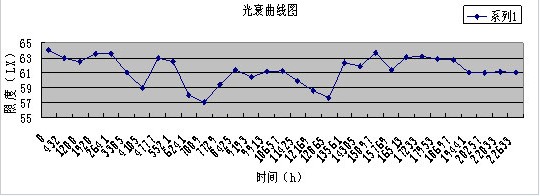Because LED light source has high luminous efficiency, low power consumption, long service life, strong safety and reliability, and is beneficial to environmental protection, it has been applied in urban lighting environment in recent years. Especially in the context of the global energy shortage worry, the prospect of LED in the lighting market has attracted worldwide attention. Since 2004, Guangyu has invested a large amount of technical force in LED technology research. Over the years, it has formed a set of high-power LED lighting technology with independent intellectual property rights---multi-chip package high-power LED lighting technology. This article describes the characteristics of this technology, and uses this technology to obtain some results for description.
First, the technical background
As far as the current situation is concerned, the LED single-tube power in the market is usually around 1-5W, and the light output is only a few hundred lumens. In order to make LEDs truly widely used in public places such as road lighting, the luminous flux of LED light sources must reach several thousand or even tens of thousands of lumens. Such high light output cannot be realized by a single chip. In order to meet such high light output requirements, at present, most of the LEDs (usually 1W) are combined in a single lamp to meet the requirements of high-brightness illumination. This method solves the brightness of a single source to some extent. Insufficient problems. However, this process has the following problems:
1. The production process of the lamps is cumbersome, the production efficiency is low, and the reliability is not high;
2. The design of the luminaire is limited by the number of single-tube LEDs and the arrangement of the lamps. The lamps produced are difficult to balance in terms of appearance and performance.
3, the secondary light distribution design of the lamp is complex, it is difficult to meet the requirements of various lighting design, and it will cause the light effect of the lamp to decrease;
4. The connection of hundreds of single-tube LEDs in the same luminaire must require the same photoelectric performance parameters of each single tube, otherwise the photoelectric performance and performance of the luminaire will be greatly reduced.
5. Blind spots caused by local faults are likely to occur during use, resulting in dark spots and increased maintenance costs.
In order to solve the above technical problems, our company put forward the topic of "multi-chip package high-power LED lighting application technology".
Second, the main research and results
During the whole project implementation process, research and experimental work was carried out mainly from the aspects of heat, optics, structure, materials and technology. The project designed and developed 1-100W high-power LED light source and LED street light, tunnel light, roadway light and pan. The application series of six series of light, industrial and mining lights and indoor lighting have declared 12 national patents including 3 invention patents.
1. The solution of the heat dissipation problem is the core, most critical and basic work solved by the research topic. When the semiconductor device PN junction operates at a normal temperature state, the theoretical lifetime can reach more than 100,000 hours. However, due to the current technical stage of LED chip development, only about 30% of the input electrical energy can be converted into light energy, and 70% of the electrical energy is still present on the chip in a hot manner. The damage to the semiconductor device by heat is very serious. For every 10 degrees increase in the PN junction temperature, the lifetime of the semiconductor device is reduced by a factor of two. Therefore, how to heat the heat generated by the PN junction in time, keeping the PN junction temperature at a low level is a prerequisite for ensuring stable and reliable operation of the light source.
In the process of solving the heat dissipation problem, the guiding ideology we adopt is a monolithic and systematic heat dissipation solution: firstly establish a heat dissipation model from the chip to the external environment; analyze the weak links affecting heat transfer in the model, and raise the need for these links. Achieve technical indicators and solutions, optimize models, and complete the entire program design. After the model design is completed, the correctness of the model is verified through experiments, and then targeted technical research is conducted on the weak links that have been discovered. Specific research projects include: the development of high-performance thermal materials, the design of light source brackets, and the exploration and improvement of new technologies. After a lot of experiments and explorations, the heat dissipation problem that restricts the development of high-power semiconductor lighting has been successfully solved, and the following results have been achieved:
(1) A number of light source brackets have been designed and developed. Two light source brackets have been declared national patents and authorized. The patent number is ZL2006 3 0125051.3 and ZL2006 3 0125053.2. Successfully packaged LED light source power up to 100W, 50W LED light source light efficiency up to 100lm / W.
(2) On the basis of perfect thermal conductivity and light output of the above-mentioned light source, the overall heat dissipation design concept is adopted to design the heat dissipation structure of the lamp. The interface filler material of thermal insulation is studied to reduce the thermal resistance between the LED bracket and the heat sink of the lamp; the heat dissipation problem of the lamp is well solved, and the LED and lamp aging test system is established, which may affect the reliability of the lamp. Relevant factors were studied and tested to find out the mechanism that affects the reliability and life of the luminaire. After 22, 633hrs life test shows that 50W high-power LED road light decays 4.53%. Figure 2 shows the 50W LED road light decay curve.

Figure 2 50WLED road light attenuation curve